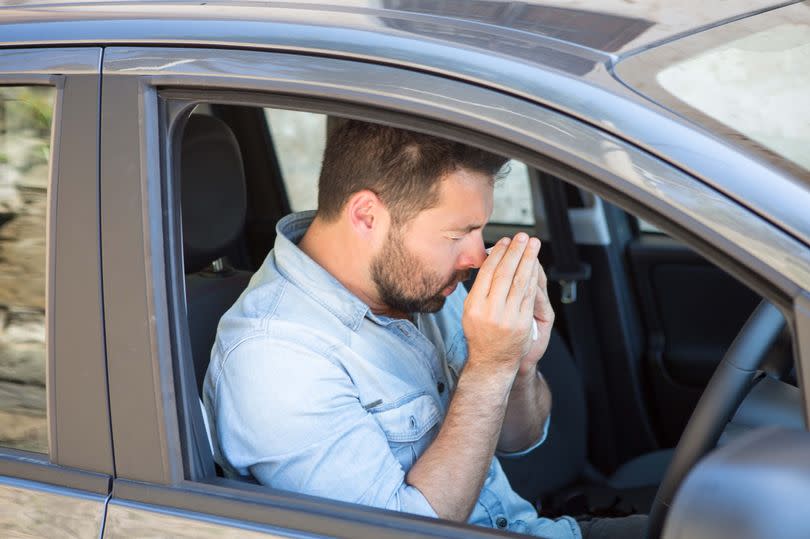Expert says car changes can beat pollen season

While spring and summer bring warmer weather and blue skies, it also marks the beginning of pollen season for one in five adults in Britain. Pollen allergies can make driving an uncomfortable and difficult task when experiencing symptoms like watery, itchy eyes and excessive sneezing.
However, some little-known car hacks can help alleviate symptoms while on the road. Saga’s motoring expert Ali Ingram-Seal shares five effective pollen-defence measures for drivers.
Change your pollen filter
Ali reveals that most cars in fact have pollen filters that often get missed during a service but play a crucial role in assisting drivers with symptoms. She said: “Most modern vehicles are fitted with pollen filters which prevent potential allergens from entering the cabin when the air conditioning is being used. However, these filters tend to become clogged and inefficient over time and are rarely replaced. Poor airflow from the aircon unit is the biggest indicator. Drivers then often resort to opening their windows instead on a warm day which only exacerbates hay fever symptoms.
“It’s highly recommended that you get it replaced at a garage every 12,000 to 15,000 miles or once every two years, depending on which comes first. Another telltale sign that the filter needs replacing is a bad smell coming from the aircon as bacteria and fungi build-up in old filters which can lead to unpleasant odours.”
Use recirculated air
Ali said: "Car air conditioning systems usually have a recirculation button with a circular arrow inside an image of a car. When activated, this button changes the aircon system from pulling in air from the outside to recirculating the air already in the car's interior. This feature is particularly useful for those who suffer from hay fever, as the recirculation mode prevents pollen from entering the car through the aircon system. It also preserves the car's pollen filters since they won't be needed to filter the air."
However, Ali suggests that it’s best to let new air in periodically on longer journeys, which some cars automatically do when the recirculation button is activated.
Choose when you travel where possible
“Pollen levels vary throughout the day so planning when you travel can reduce the likelihood of suffering hay fever symptoms,” said Ali. “Most plants release their pollen throughout the night and early hours of the morning. Wind and warm air currents lift pollen from the ground, so symptoms worsen around midday until the temperature cools in the evening when pollen settles on the ground.
“Planning journeys in the morning before the pollen has had a chance to disperse in the air can help prevent symptoms as well as travelling later in the evening when the air has cooled.”
Clean your car thoroughly
“Both the vehicle interior and exterior can contribute to exacerbating hay fever symptoms while driving, so it’s important to keep both clean,” said Ali. “Externally, make sure to regularly wash your car with soapy water to minimise possible exposure points, like door handles. Applying a new wax finish will also help prevent pollen from sticking to your car whilst protecting the paintwork.
"Inside the car, pollen can enter on clothing, particularly shoes. When cleaning the interior pay extra attention to the door mats, seats and air vents as allergens can linger there.”
Switch to rubber floor mats
“Consider removing carpet floor mats as pollen can very easily embed itself in the fibres,” Ali said. “Rubber floor mats are a great alternative to avoid this as they’re easy to clean and reduce the overall allergen levels in the cabin.”

 Yahoo News
Yahoo News 
